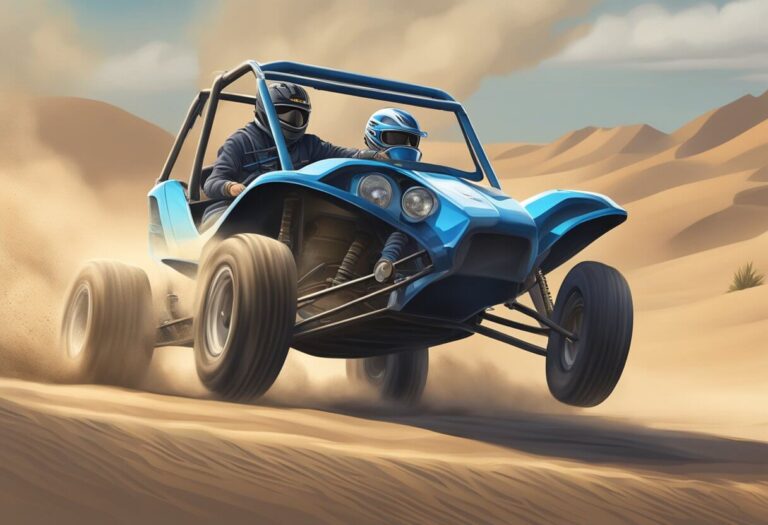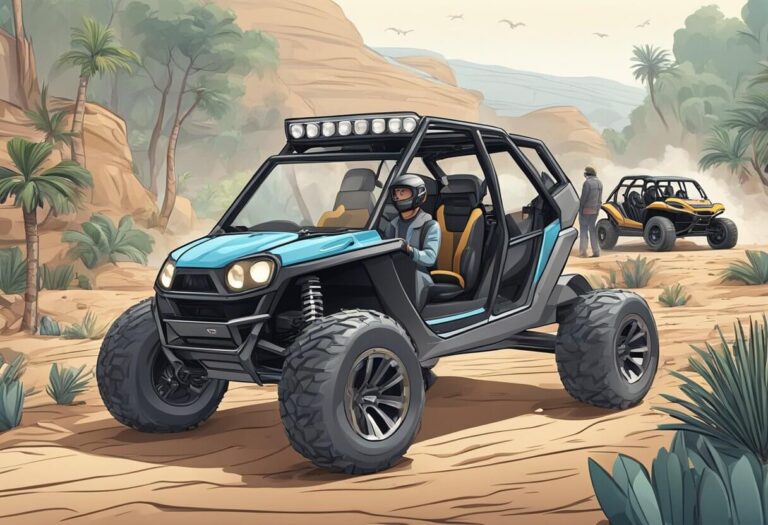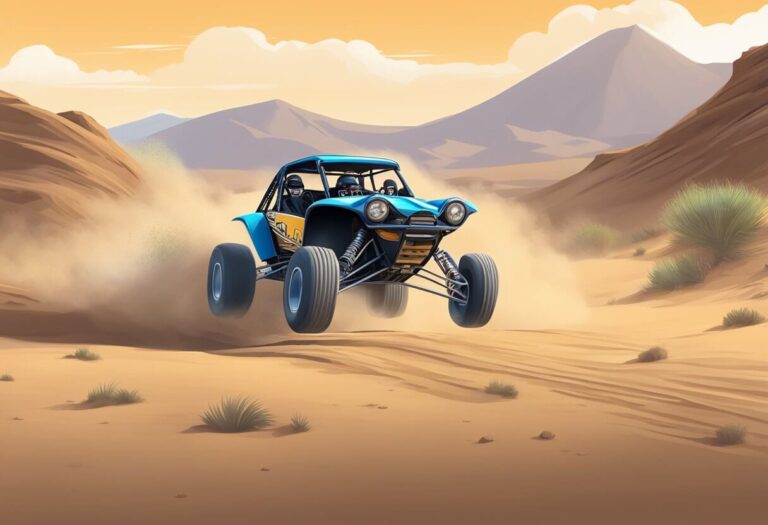Mini Dune Buggy Frame: Guide to Choosing the Right One

Mini dune buggy frames are small, lightweight, and agile vehicles that can be used for off-road adventures and racing. These vehicles are designed to be compact and powerful, with a low center of gravity and a sturdy frame that can withstand the rigors of driving over rough terrain.
Design principles for mini dune buggy frames include features such as tubular steel frames, independent suspension systems, and a rear-mounted engine. The frame is typically designed to be lightweight and durable, with a low center of gravity that helps to improve stability and handling. Suspension systems are designed to be adjustable and responsive, with features such as coil-over shocks and adjustable sway bars.
Building a mini dune buggy frame requires a combination of welding skills, fabrication experience, and mechanical knowledge. The frame must be designed to fit the specific needs and preferences of the driver, with options for customization such as roll cages, seats, and steering systems. Proper maintenance and upkeep are essential to ensure that the vehicle remains safe and reliable, and legal considerations such as registration and insurance must also be taken into account.
Key Takeaways
- Mini dune buggy frames are designed to be small, lightweight, and agile, with a sturdy frame and independent suspension system.
- Building a mini dune buggy frame requires welding skills, fabrication experience, and mechanical knowledge, and customization options are available for drivers.
- Proper maintenance and upkeep are essential for safety and reliability, and legal considerations such as registration and insurance must also be taken into account.
Design Principles
When designing a mini dune buggy frame, several design principles must be considered to ensure that the frame is safe, durable, and functional. In this section, we will discuss the three most important design principles: frame geometry, material selection, and safety features.
Frame Geometry
The geometry of the frame is crucial to the performance and safety of the mini dune buggy. The frame should be designed to provide adequate ground clearance, stability, and maneuverability. The wheelbase should be optimized to provide the best balance between stability and maneuverability, and the suspension should be designed to absorb shocks and vibrations.
Material Selection
The materials used to construct the frame should be strong, lightweight, and corrosion-resistant. Aluminum and chromoly steel are popular choices for mini dune buggy frames due to their strength and weight. The thickness of the tubing used in the frame should be carefully selected to ensure that it can withstand the stresses and strains of off-road driving.
Safety Features
Safety features are essential to protect the driver and passengers of the mini dune buggy. The frame should be designed to provide a roll cage and seat belts to prevent injuries in the event of a rollover. The suspension should be designed to provide adequate ground clearance to prevent the vehicle from bottoming out and to protect the undercarriage from damage. Additionally, the mini dune buggy should be equipped with appropriate lighting, such as headlights and taillights, to ensure visibility in low-light conditions.
Building the Frame
Building a mini dune buggy frame requires careful planning, precise measurements, and excellent welding skills. In this section, we will discuss the three main aspects of building the frame: Cutting and Shaping, Welding Techniques, and Reinforcement Points.
Cutting and Shaping
The first step in building a mini dune buggy frame is to cut and shape the tubing. The tubing should be cut to the required length and shape using a chop saw or a tube notcher. The tubing should be cut at a 45-degree angle to ensure a tight fit when welding. Once the tubing has been cut, it should be shaped using a bender to ensure that it conforms to the required shape.
Welding Techniques
Welding is a critical aspect of building a mini dune buggy frame. The welding should be done using a MIG or TIG welder. The welds should be clean, strong, and free from any defects. The welds should be made using a back and forth motion to ensure that the heat is evenly distributed. The welds should be ground down to ensure a smooth finish.
Reinforcement Points
Reinforcement points are critical in ensuring that the mini dune buggy frame is strong and durable. Reinforcement points should be added at stress points such as the suspension mounts, roll cage, and engine mounts. The reinforcement points should be made using thicker tubing and should be welded securely to the frame.
Suspension System
When it comes to mini dune buggy frames, the suspension system is a crucial component that is responsible for providing a smooth ride while also ensuring stability and safety. In this section, we will discuss the different parts of the suspension system and their functions.
Shock Absorbers
Shock absorbers are an essential part of the suspension system that helps dampen the impact of bumps and uneven terrain. They work by converting kinetic energy into heat, which is then dissipated into the air. Mini dune buggy frames typically use hydraulic shock absorbers, which are filled with oil and gas to provide a smoother and more controlled ride.
Axle Installation
The axle is the component that connects the wheels to the frame and allows them to rotate. The installation of the axle is critical to ensure that the wheels are aligned properly and that the suspension system is functioning correctly. Mini dune buggy frames typically use a solid rear axle, which provides better traction and stability on rough terrain.
Wheel Assembly
The wheel assembly is composed of the wheel, tire, and rim. Mini dune buggy frames typically use off-road tires that are designed to provide traction on sand, dirt, and other rough terrain. The rims are usually made of lightweight materials such as aluminum to reduce the overall weight of the vehicle.
Steering Mechanism
Steering Column
The steering column is an essential component of the mini dune buggy’s steering mechanism. It connects the steering wheel to the steering box, allowing the driver to control the direction of the vehicle. The steering column should be sturdy enough to withstand the stresses of off-road driving, but also flexible enough to allow for smooth and precise steering.
When selecting a steering column for a mini dune buggy, it is important to consider the length and diameter of the column, as well as the material it is made from. A column that is too short or too long can make it difficult to steer the vehicle, while a column that is too thin or weak can lead to dangerous steering failures.
Tie Rods and Spindles
Tie rods and spindles are also critical components of the mini dune buggy’s steering system. The tie rods connect the steering box to the wheels, while the spindles connect the wheels to the suspension system. Together, they allow the wheels to turn in response to the driver’s steering input.
When selecting tie rods and spindles for a mini dune buggy, it is important to consider the weight and size of the vehicle, as well as the terrain it will be driven on. Heavy-duty tie rods and spindles are necessary for larger vehicles or more rugged terrain, while lighter-duty components may be suitable for smaller vehicles or smoother terrain.
Overall, a well-designed and properly installed steering mechanism is essential for safe and enjoyable off-road driving in a mini dune buggy.
Powertrain Integration
Engine Mounting
The engine is a critical component of the mini dune buggy frame. It provides the power necessary to drive the vehicle. The engine must be mounted securely to the frame to prevent any damage or failure during operation. The engine is typically mounted to the frame using a combination of bolts and brackets. The mounting points should be designed to handle the weight and vibration of the engine. The engine should be positioned in such a way that it does not interfere with other components of the frame.
Transmission Setup
The transmission is responsible for transferring power from the engine to the wheels. The transmission setup should be carefully designed to ensure that it is capable of handling the power output of the engine. The transmission should be mounted securely to the frame to prevent any damage or failure during operation. The transmission should be positioned in such a way that it does not interfere with other components of the frame.
Drive Chain and Sprockets
The drive chain and sprockets are responsible for transferring power from the transmission to the wheels. The drive chain should be designed to handle the power output of the engine. The sprockets should be carefully selected to ensure that they are compatible with the drive chain. The drive chain and sprockets should be mounted securely to the frame to prevent any damage or failure during operation. The drive chain and sprockets should be positioned in such a way that they do not interfere with other components of the frame.
In summary, the powertrain integration is a crucial aspect of mini dune buggy frame design. The engine, transmission, drive chain, and sprockets should be carefully selected and mounted securely to the frame to ensure safe and reliable operation.
Customization Options
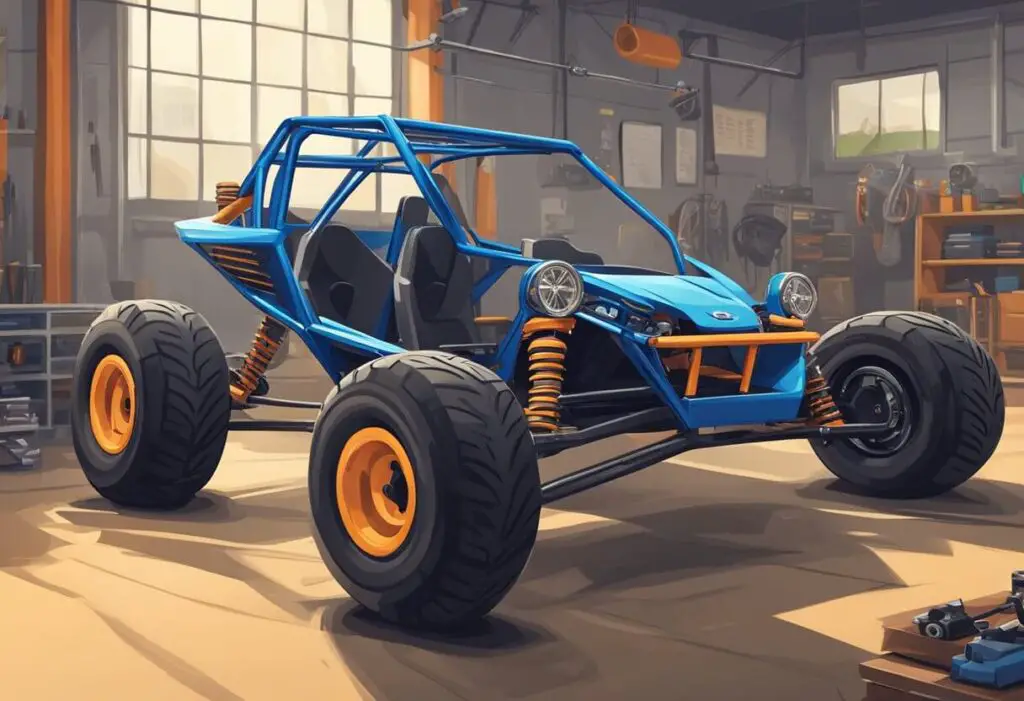
Mini dune buggies provide a great platform for customization. The following subsections explore some of the options available to personalize your mini dune buggy.
Body Panels
Body panels are a popular customization option for mini dune buggies. Fiberglass and carbon fiber panels are lightweight and durable, making them a popular choice among off-road enthusiasts. These panels are available in a variety of styles and colors, allowing you to create a unique look for your mini dune buggy. Some popular body panel styles include classic dune buggy, sand rail, and baja bug.
Paint and Finishing
Paint and finishing are another way to customize your mini dune buggy. A fresh coat of paint can give your mini dune buggy a new look and feel. Custom paint jobs are a popular option for those looking to create a one-of-a-kind vehicle. Finishing options such as powder coating and anodizing can also add a layer of protection to your mini dune buggy, helping to prevent rust and corrosion.
Seating and Ergonomics
Seating and ergonomics are important considerations for any off-road vehicle. Custom seats can provide additional comfort and support, while ergonomic controls can make driving your mini dune buggy more comfortable. Adjustable seats and steering wheels can also help accommodate drivers of different sizes. Additionally, roll bars and cages can provide added safety in the event of a rollover.
Maintenance and Upkeep
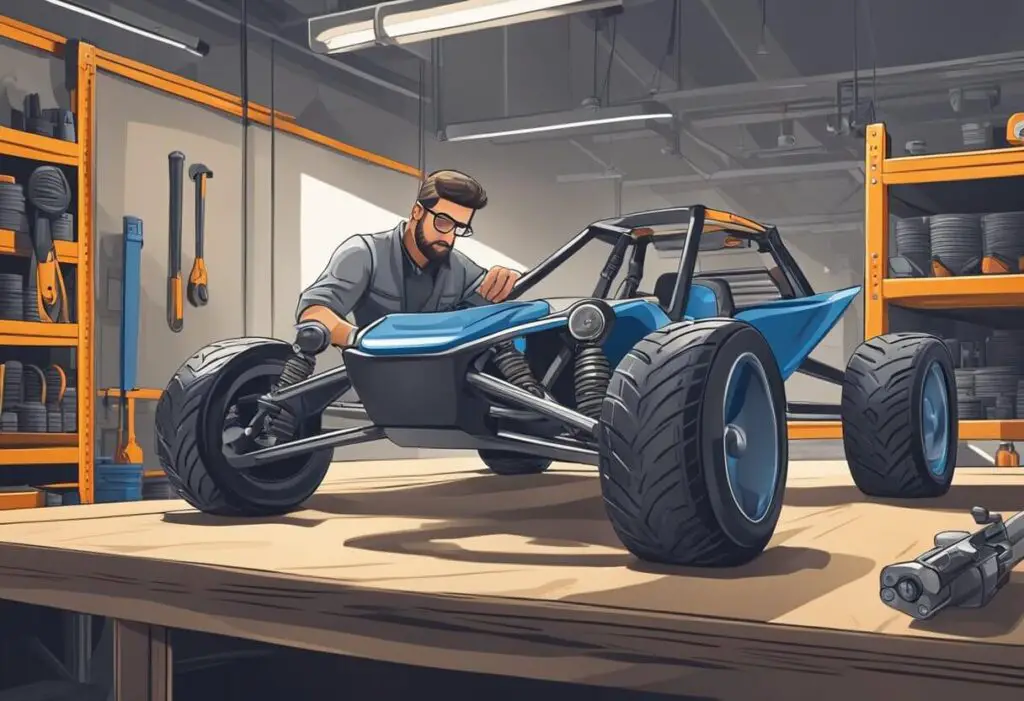
Regular Inspection
Regular inspection is crucial for maintaining the mini dune buggy frame. It is recommended to inspect the frame before and after each ride to ensure that it is in good condition. During inspection, one should check the frame for any cracks, dents, or signs of wear and tear. If any damage is found, it is important to address it immediately to prevent further damage.
Replacement Parts
Replacement parts are necessary to keep the mini dune buggy frame in good condition. It is important to use high-quality parts that are compatible with the frame to ensure that it functions properly. Some common replacement parts include suspension components, tires, and steering components. It is recommended to consult the manufacturer’s manual or a professional mechanic for guidance on which parts to use.
Troubleshooting Common Issues
There are some common issues that mini dune buggy owners may encounter. These issues include difficulty starting the engine, poor handling, and unusual noises. If any of these issues are encountered, it is recommended to troubleshoot the problem before riding the buggy again. Some common troubleshooting steps include checking the battery, adjusting the suspension, and inspecting the engine.
Legal Considerations
When it comes to mini dune buggy frames, there are some legal considerations that must be taken into account. This section will provide an overview of the off-road regulations and vehicle registration requirements that apply to mini dune buggies.
Off-Road Regulations
Mini dune buggy frames are designed to be driven off-road, so it’s important to be aware of the regulations that apply to off-road vehicles. In general, off-road vehicles are subject to fewer regulations than street-legal vehicles, but there are still some rules that must be followed.
One of the most important rules is that off-road vehicles are not allowed to be driven on public roads. This means that mini dune buggies cannot be driven on streets, highways, or other public roads. Instead, they must be driven on private property or designated off-road areas.
In addition, off-road vehicles are often subject to noise and emissions regulations. It’s important to check the regulations in your area to make sure that your mini dune buggy frame complies with these rules.
Vehicle Registration
In some cases, mini dune buggy frames may need to be registered with the local motor vehicle department. This is often the case if the mini dune buggy is used on public land or if it is driven on private property that is adjacent to public land.
To register a mini dune buggy frame, you will need to provide proof of ownership and pay any applicable fees. You may also need to provide proof of insurance and pass a safety inspection.
Check your area’s regulations to see if you need to register your mini dune buggy frame. Not registering your vehicle can lead to fines and penalties.


